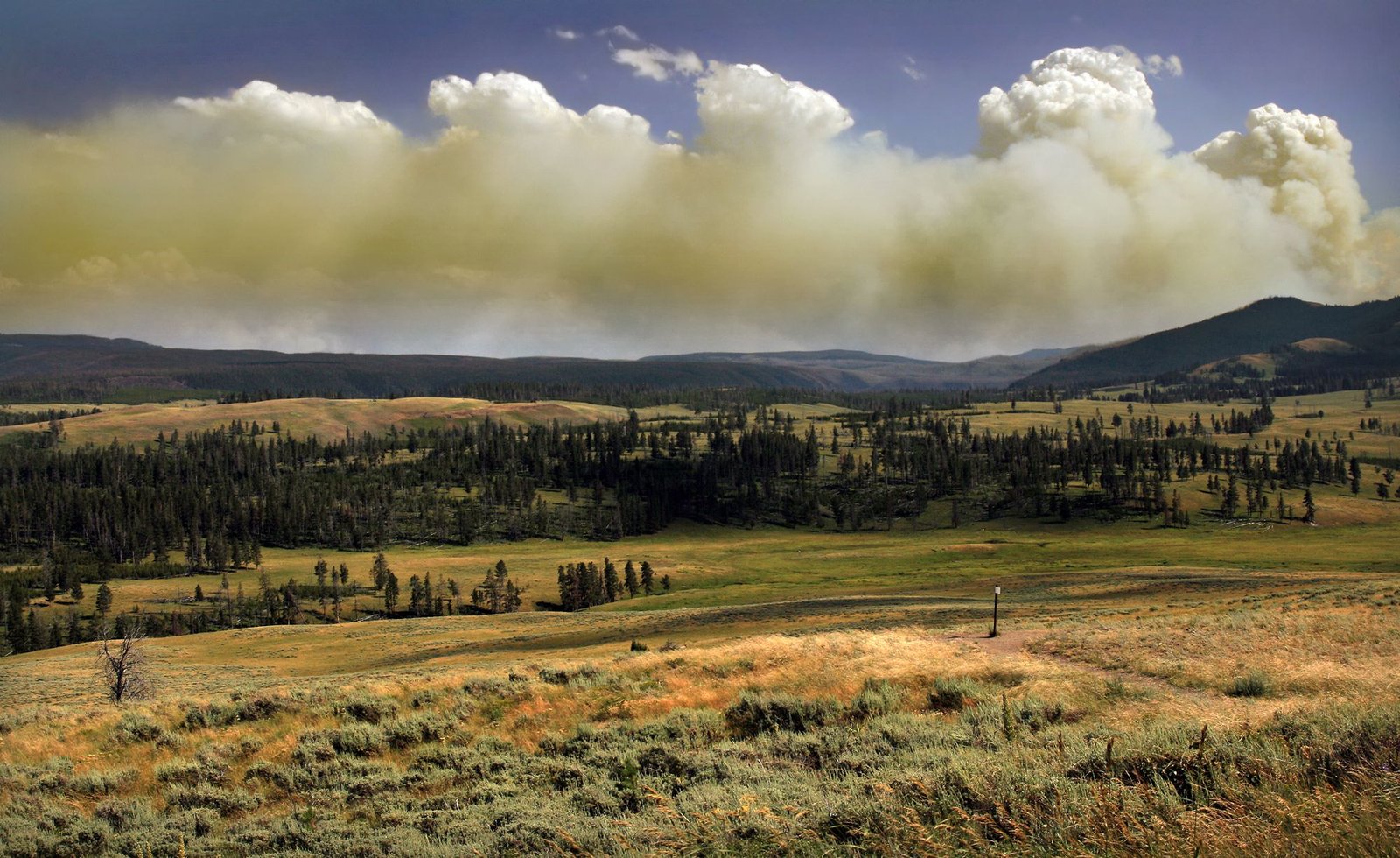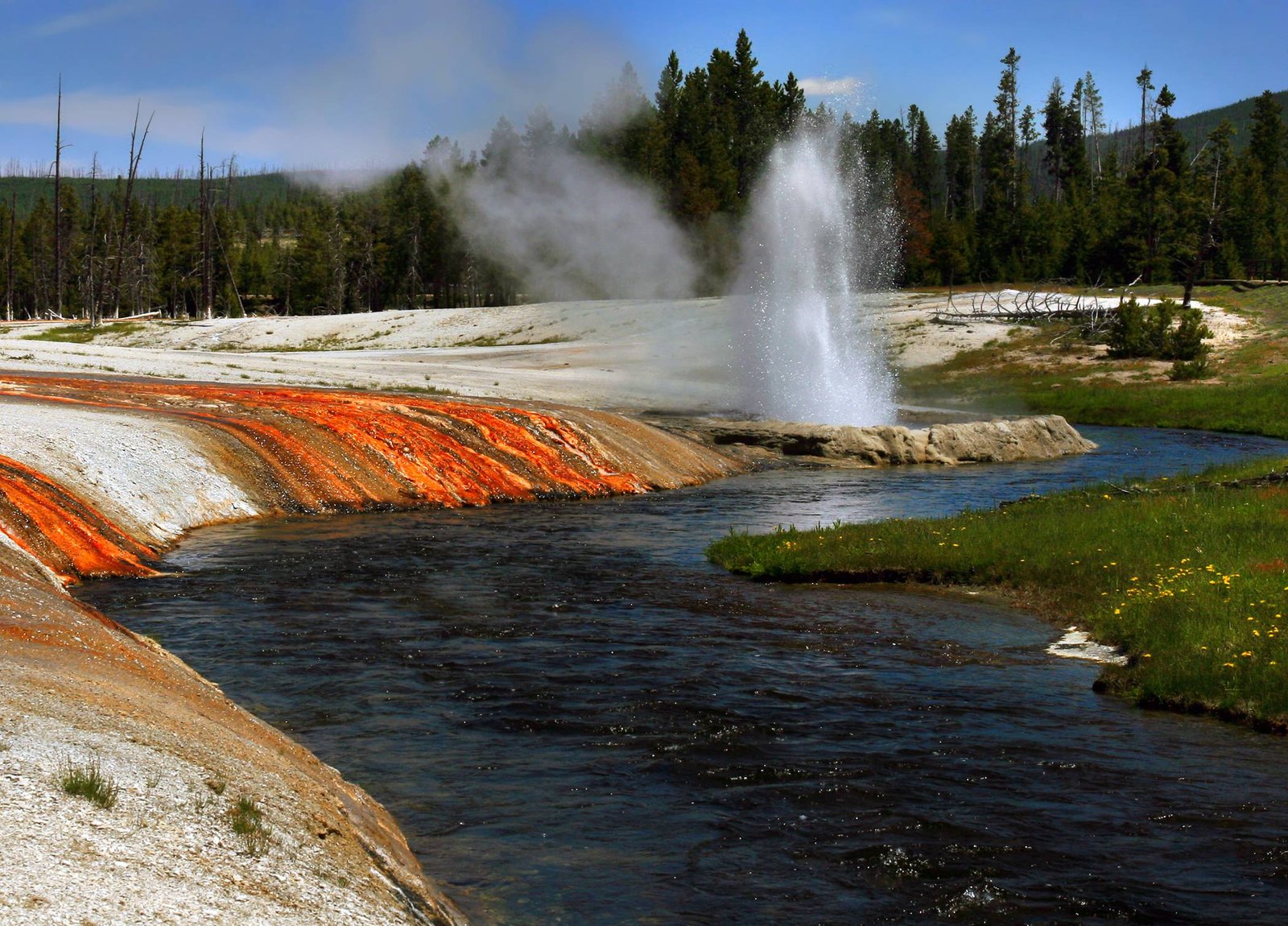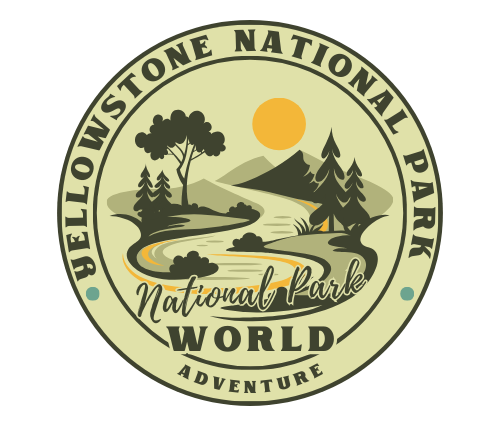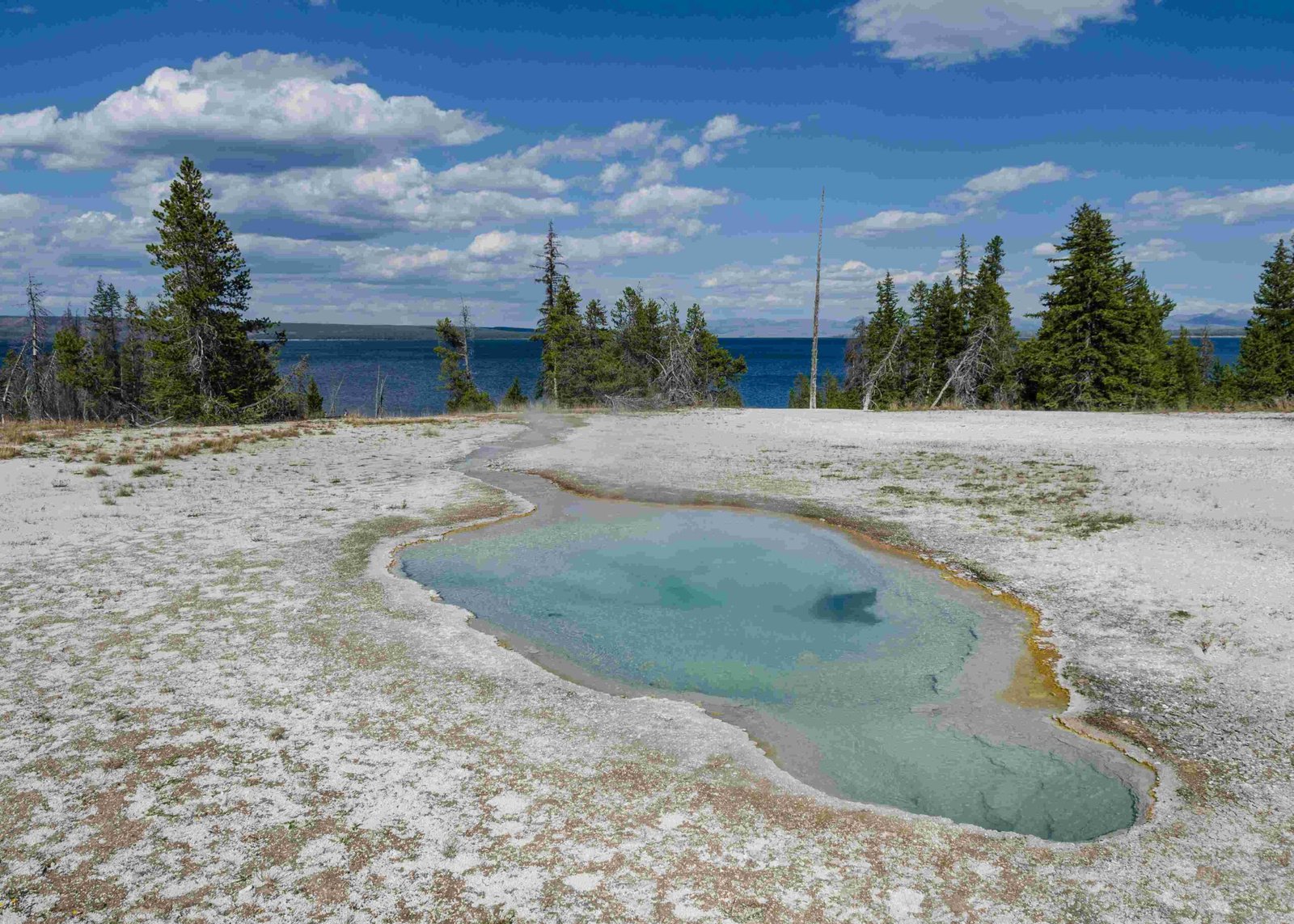Broad volcanic plateaus in Yellowstone National Park are vast, elevated landforms shaped by ancient volcanic activity. These expansive areas, averaging 7,875 feet in elevation, are primarily composed of rhyolitic material from numerous eruptions over the past 2.1 million years. The plateaus form a significant part of the Yellowstone Plateau Volcanic Field, showcasing the park’s dynamic geological history and offering visitors a unique landscape to explore.
What Are the Key Features of Yellowstone’s Broad Volcanic Plateaus?

Yellowstone’s broad volcanic plateaus are characterized by several distinctive features:
- Elevation: Average height of 7,875 feet (2,400 meters) above sea level
- Composition: Primarily rhyolitic material from lava flows and ash deposits
- Age: Formed over the past 2.1 million years through multiple eruptions
- Landscape: Vast, relatively flat areas punctuated by mountain ranges and geothermal features
The plateaus are part of the larger Yellowstone Plateau Volcanic Field, which encompasses:
- Extensive rhyolitic plains
- Numerous geothermal features (geysers, hot springs, fumaroles)
- Surrounding mountain ranges (Gallatin, Absaroka, Teton)
How Were the Broad Volcanic Plateaus Formed?

The formation of Yellowstone’s broad volcanic plateaus is a result of complex geological processes:
- Volcanic Activity: Multiple eruptions over millions of years deposited layers of rhyolitic material.
- Tectonic Forces: Uplift and movement of the Earth’s crust shaped the overall landscape.
- Erosion: Ice and water sculpted the plateaus and surrounding features over time.
This combination of forces created the unique topography we see today, with vast flat areas interspersed with dramatic mountain ranges and geothermal features.
What Makes Yellowstone’s Broad Volcanic Plateaus Unique?
Yellowstone’s broad volcanic plateaus stand out for several reasons:
- Geothermal Activity: The plateaus are home to the world’s largest concentration of geysers and hot springs.
- Biodiversity: These areas support diverse ecosystems, from forests to grasslands.
- Geological Record: The plateaus provide a visible history of volcanic activity spanning millions of years.
- Scenic Beauty: The vast, open landscapes offer breathtaking views and unique photographic opportunities.
How Can Visitors Access the Broad Volcanic Plateaus?
Accessing Yellowstone’s broad volcanic plateaus is relatively straightforward:
- Road Network: The Grand Loop Road provides access to many areas of the park.
- Parking: Numerous parking areas are available near major attractions.
- Hiking Trails: A network of trails allows visitors to explore the plateaus on foot.
| Access Method | Availability | Notes |
|---|---|---|
| Car | Year-round* | Some roads closed in winter |
| Hiking | Seasonal | Trail conditions vary |
| Guided Tours | Seasonal | Available through park services |
*Road closures may occur due to weather or maintenance.
What Activities Can Visitors Enjoy on the Broad Volcanic Plateaus?
Visitors to Yellowstone’s broad volcanic plateaus can engage in a variety of activities:
- Hiking: Numerous trails offer opportunities to explore the landscape up close.
- Wildlife Viewing: The plateaus are home to diverse wildlife, including bison, elk, and birds.
- Photography: The unique landscapes and geothermal features provide excellent photo opportunities.
- Geothermal Observation: Visitors can witness geysers, hot springs, and other geothermal phenomena.
- Guided Tours: Ranger-led programs offer insights into the geology and ecology of the area.
What Should Visitors Know Before Exploring the Broad Volcanic Plateaus?
Before visiting Yellowstone’s broad volcanic plateaus, consider the following:
- Safety: Stay on designated trails and maintain a safe distance from wildlife and geothermal features.
- Weather: Conditions can change rapidly; be prepared for various weather scenarios.
- Elevation: The high altitude can affect some visitors; stay hydrated and take it easy.
- Seasonal Changes: Some areas may be inaccessible during winter months.
- Park Rules: Familiarize yourself with park regulations to protect the environment and ensure a safe visit.
How Do Seasonal Changes Affect the Broad Volcanic Plateaus?
Yellowstone’s broad volcanic plateaus experience significant seasonal variations:
| Season | Characteristics | Visitor Experience |
|---|---|---|
| Spring | Melting snow, wildflowers | Some road closures, fewer crowds |
| Summer | Warm temperatures, peak visitation | All areas accessible, potential crowds |
| Fall | Cooler temperatures, fall colors | Fewer crowds, some facility closures |
| Winter | Snow-covered landscapes, limited access | Unique winter activities, limited services |
Each season offers a different perspective on the plateaus, from snow-covered winter landscapes to vibrant summer meadows.
What Research Opportunities Do the Broad Volcanic Plateaus Offer?
Yellowstone’s broad volcanic plateaus provide numerous research opportunities:
- Geology: Studying volcanic processes and geothermal activity
- Ecology: Investigating unique ecosystems adapted to the volcanic environment
- Climate Change: Monitoring the impact of climate change on high-elevation landscapes
- Hydrology: Examining the interaction between surface water and geothermal systems
- Microbiology: Exploring extremophile organisms in geothermal features
These research areas contribute to our understanding of volcanic systems, ecosystem dynamics, and potential applications in fields like biotechnology.
In conclusion, Yellowstone’s broad volcanic plateaus offer a unique window into the Earth’s geological processes, supporting diverse ecosystems and providing visitors with unparalleled opportunities to experience the power and beauty of nature. Whether you’re a casual visitor or a dedicated researcher, these vast landscapes have something to offer, inviting exploration and inspiring awe at the forces that shape our planet.

